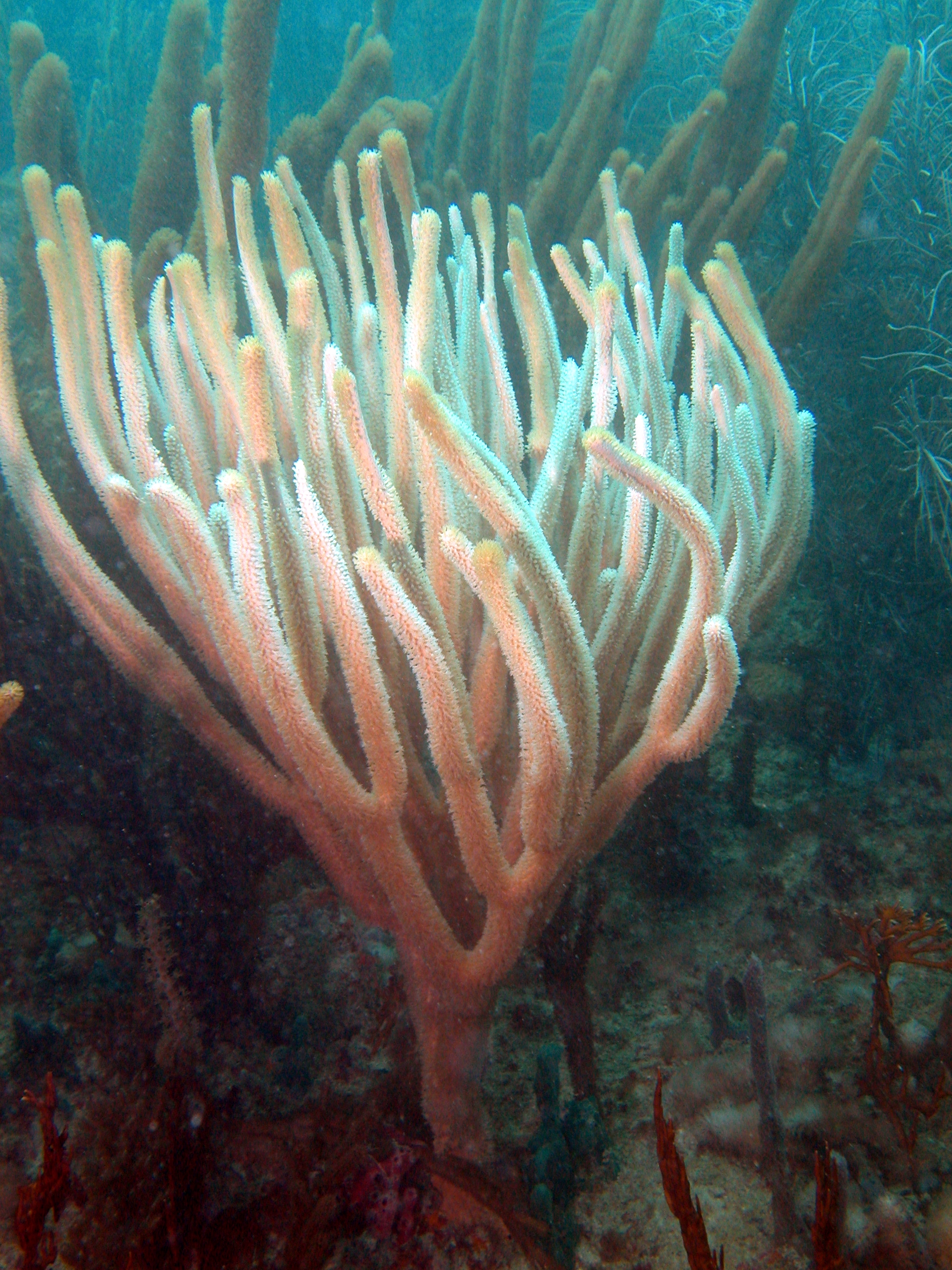The growth of corals and the development of coral reefs are aided by a special symbiotic association with photosynthetic algae, called zooxanthellae. These single-celled algae are located intracellularly within the endodermal tissues of scleractinian corals. This relationship between algae and coral is beneficial for both species. The coral provides zooxanthellae with a protected environment and nutritional compounds necessary for photosynthesis. Zooxanthellae provide several benefits to corals such as the removal of wastes, the production of oxygen via photosynthesis, the supply of organic products that serve as the building blocks for coral metabolism and the enhancement of coral calcification.


Zooxanthellate corals under physiological stress induced by anthropogenic and natural variations may respond by the expulsion of their algal symbionts. The result is coral bleaching, where the corals lose color previously produced by the photosynthetic pigments of the zooxanthellae, leaving only the color of the white calcium carbonate skeleton. Coral bleaching has been reported throughout the Caribbean (including PR and the USVI) since the 1940s, associated with localized events, including significant changes in salinity, turbidity and extreme low tides. Bleaching on a larger scale was first observed in Puerto Rico in 1969, and a massive coral bleaching and mortality occurred during the summer of 1987, which was associated with exceptionally calm seas coupled with high water transparency and increased water temperature. In 1998, another bleaching event affected several regions in the northern Caribbean with low to moderate bleaching and mortality. In 2005, with temperatures up to 33.1oC, massive bleaching was followed by disease, resulting in high rates of mortality. Studies have shown that cumulative heat stress (degree-days) can predict the occurrence of coral bleaching, although the onset is usually triggered by short-term temperature rise. The combined impact of coral bleaching and subsequent disease is one of the most severe threats facing coral reefs. As global warming has increased temperatures in the Caribbean, there has been an exponential increase in the extent and intensity of bleaching. A regional rise in sea surface temperature of 0.1oC results in a 35% increase in the geographic extent of bleaching and a 42% increase in its intensity.
Long term monitoring programs have been key components to identify the temporal dynamics of bleaching events. From the 2005 bleaching event the monitoring program around PR found that 82 coral and gorgonian species were negatively impacted and island-wide outbreaks of yellow-band disease and white plague type II led to a 20-60% decline in live coral cover within 6 months following the bleaching. Such drastic declines have already caused significant phase shifts in coral reef benthic community structure, presenting managers and decision makers with major challenges. These may include the need to develop aggressive and effective coral reef conservation-oriented management and research strategies aimed at dealing with unequivocal loss of resistance, resilience and ecological function.
References & more
- Heron S.F., Maynard J.A., van Hooidonk R., Eakin C.M. (2016) Warming trends and bleaching stress of the world’s coral reefs 1985-2012. Scientific Reports 6 (38402): 1-14
- Hughes et al. 2017 Global warming and recurrent mass bleaching of corals. Nature 543: 373-385
- Weil E., Croquer A., Urreiztieta I. (2009) Temporal variability and impact of coral diseases and bleaching in La Parguera, Puerto Rico from 2003-2007. Caribbean Journal of Science 45 (2-3): 221-246
